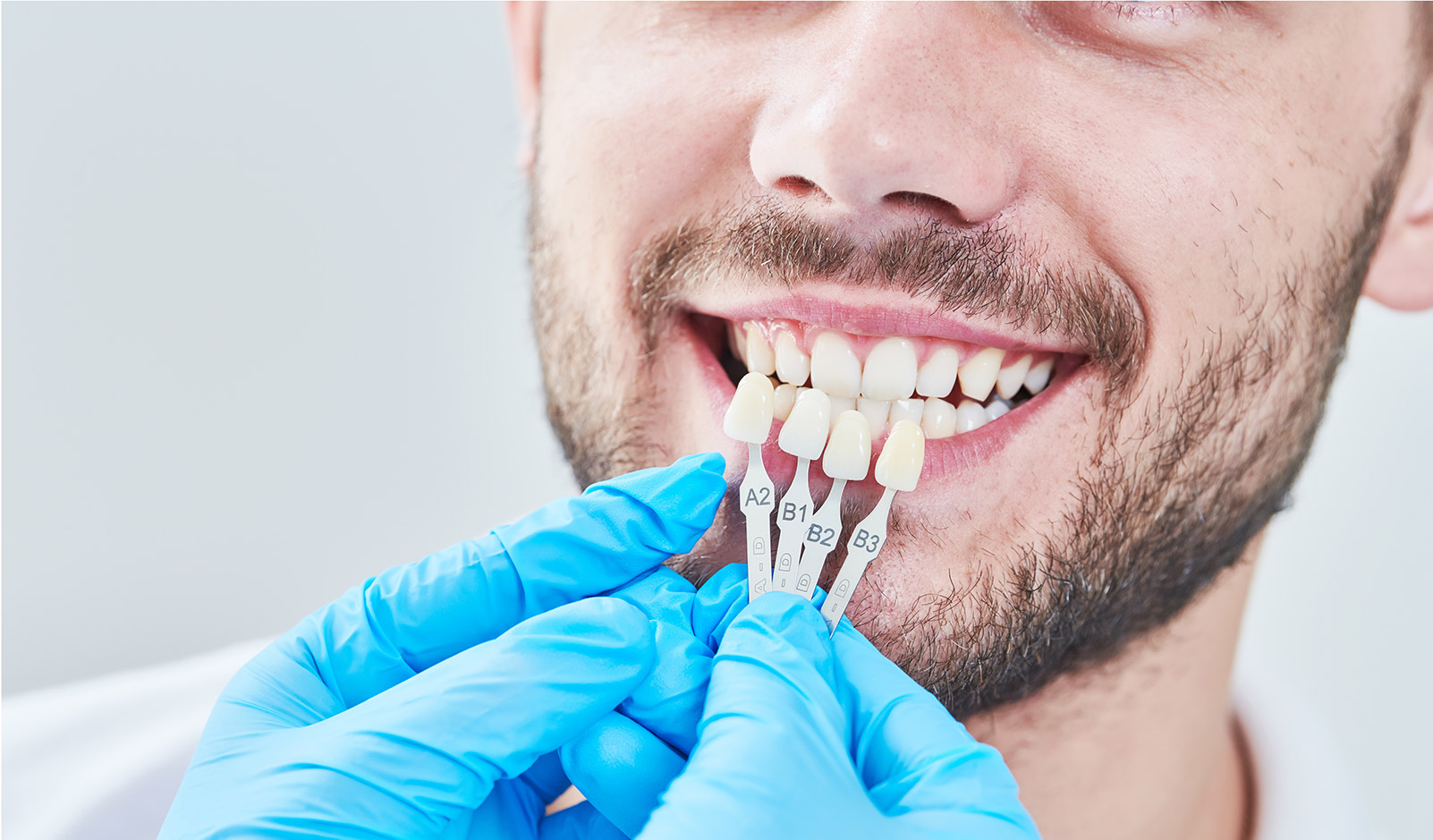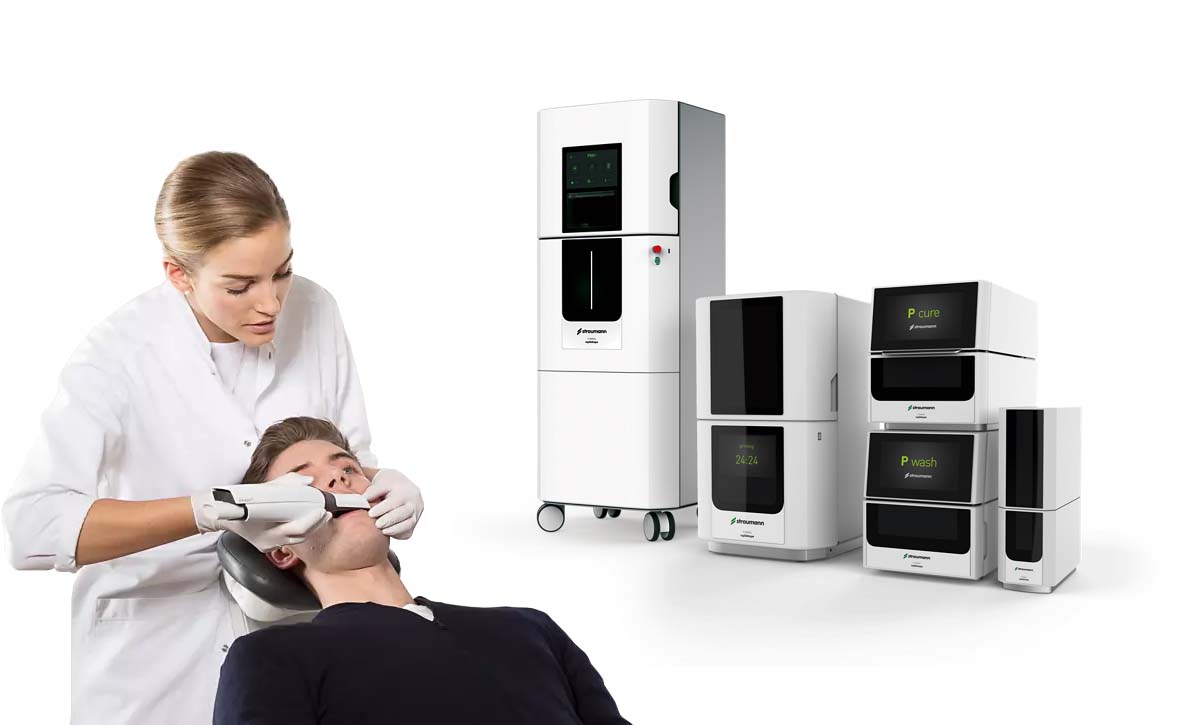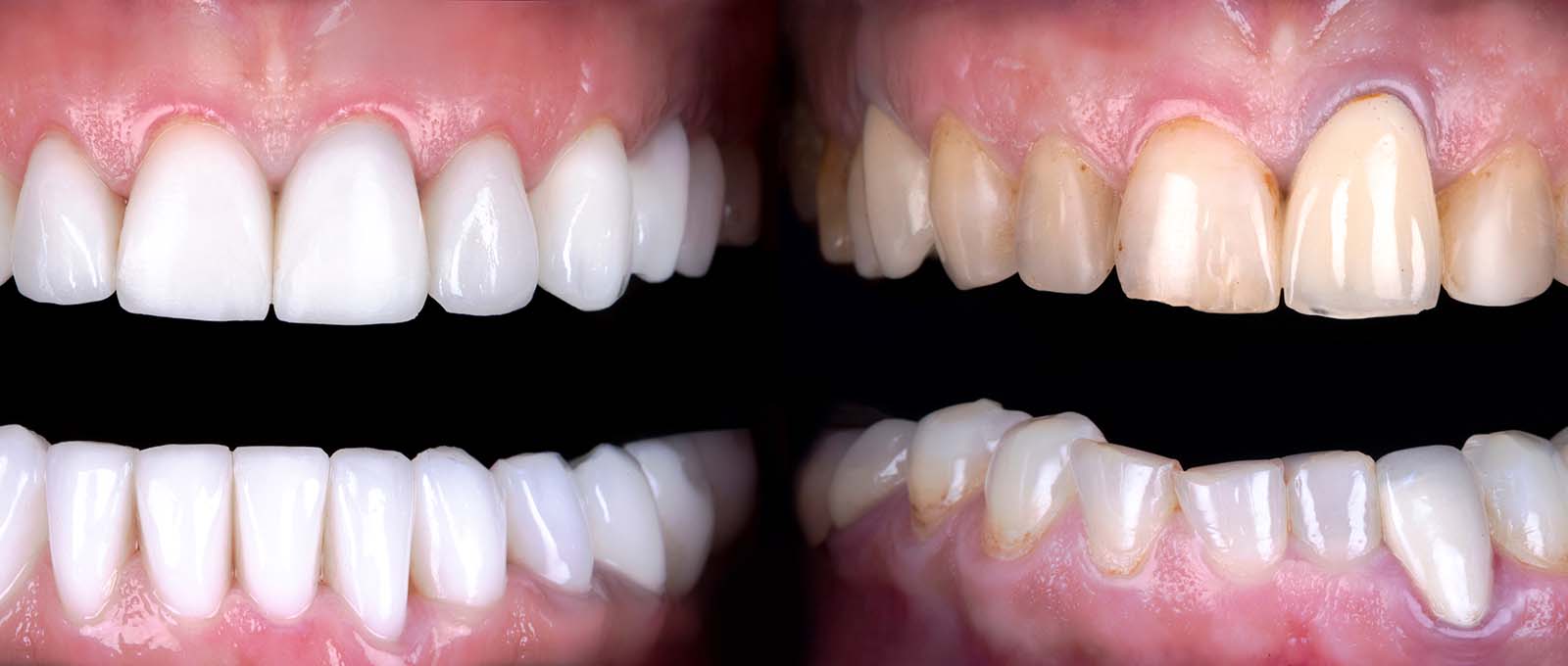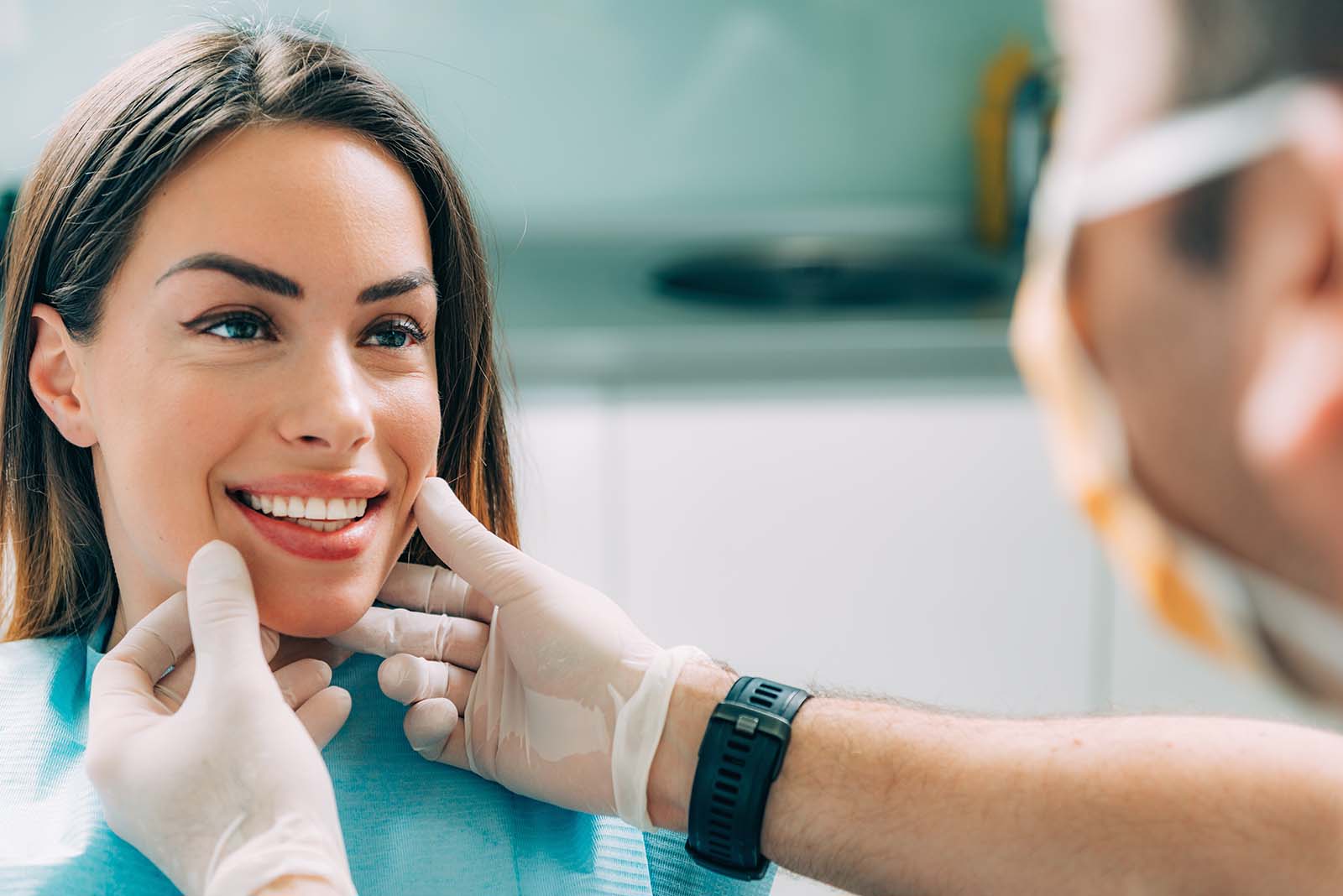Invisalign is a product that your dentist might recommend for you. Like braces, it is used to improve the overall health and appearance of your teeth. Whether you have an overbite, gaps between your teeth, or some other issue, Invisalign may be a great solution.
While your dentist will probably bring it up, if he doesn’t and if you think it might help you have a better smile, you can take the initiative and ask him yourself. After all, it is a form of treatment that most people prefer to clunky, unattractive, and traditional braces.
First of all, Invisalign use clear trays as aligners. Because these are created using molds from your own mouth, they offer a much better fit. They work by slowly moving your teeth to the optimal position for your mouth. Second, your dentist will provide a comprehensive treatment plan. But first you have to get approval from him or her.
Depending on what needs to be fixed, you could find that you only need Invisalign for 6 months. Even if you need to wear the product for a longer period, however, you will start to see an improvement in weeks.
While Invisalign cost can seem pricey, it is a good value given all the benefits.
A Consultation is Required
Since Invisalign takes your health seriously, you will need a consultation. Your dentist will examine the overall health of your mouth. He or she will examine all facets of your oral health. He or she will create impressions of your mouth.
These impressions are used by Invisalign to provide a custom fit. Your dentist will create the best treatment plan to use the series of trays designed. Every week or two, you will replace an older tray with a brand new one.
Because each tray is a little bit different, the series of trays gently work to gradually shift the position of your teeth. This makes the process very effective. It is also typically less uncomfortable than traditional braces. Unlike braces, Invisalign are not likely to cut your soft tissues, like the inside of your cheeks.
So, is Invisalign better than braces? There are reasons many people prefer them. We’ll go into more detail about these reasons later in this post.
How Much Is Invisalign?
Maybe you are intrigued by this great product, but you need to make sure it would work for you, so of course you have questions. One of the most common things people want to know is how expensive is Invisalign. Is Invisalign cheaper than braces?
If you live in the Los Angeles area, then you’ll want to know specifically about how much is the cost fo Invisalign in Los Angeles.
One of the best places in the area is Southland Dental Care. To really understand the Invisalign cost, you need to look at the following:
- your personal oral health
- how much work is needed for your particular condition
- the time and labor required by your dentist
- whether your insurance plan will pay for all or part of the cost; the Invisalign cost without insurance can be expensive
The prices in a place like Los Angeles will be higher than in many other places, but the flip side of this is that you’re likely to have access to better quality care. So that will make up for any extra nvisalign price. On the flip side, the Invisalign cost California is not necessarily high depending on where you are.
And the overall cost shows that both Invisalign or braces can be equally expensive.
While Invisalign’s website estimates the cost for treatment to be anywhere from $3,000 to $7,000, the actual out of pocket cost for someone with dental insurance will be a lot less. After all, as much as $3,000, or more, might be covered.
As a comparison, the traditional metal and wire braces that are the bane of many children are also fairly pricey. Despite being a bulkier and less modern technology, these cost between $2,000 and $6,000.
How To Save On Invisalign
There are both practical as well as aesthetic reasons to use Invisalign. It will not only help you look better, but will also help your overall oral health. After all, it is harder to keep crooked teeth clean. This can result in jaw pain, tooth decay, and periodontal disease. This is all in addition to how a less attractive smile may affect your confidence and ability to have good social and professional interactions.
So, it really is worth it to invest in your good dental health. Yet not everyone has a great insurance policy or plenty of disposable income. Fortunately, there are ways you can save or more easily cover the costs. While Invisalign cost may seem high, there are ways to make it manageable. These options are available whether you choose Invisalign or braces.
Flexible Spending Accounts
Flexible Spending Accounts or FSAs are a great way to help pay for medical costs. Of course, if you want to use this option, you need an employer who offers it.
If your company offers this, you can save part of your income before any taxes are paid into an account that will be used for healthcare. FSAs are typically simple to use. You might simply use a debit card tied to the account. The only disadvantage is that you are limited to the annual amount you can put into a FSA. In 2018, the most you could contribute was $2,650. This could cover much of the Invisalign price.
Health Savings Accounts
The difference between a Health Savings Account, or HSA, and FSA has three components. First, while you lose any money you don’t use in your FSA, you can roll over the money in your HSA. Second, you can put more money into your HSA. While not a ton more, you will have some additional amount for your medical care. Finally, to have an HAS, you have to have an insurance plan with a high deductible.
Payment Plans
If you have been going to a dentist for years, it’s possible you might be able to get a payment plan. You may or may not be able to qualify, but you can ask and see what they say.
For those in the Los Angeles area, Southland Dental Care does provide monthly payment options. This makes it easier to pay for the Invisalign cost.
A Credit Card
A credit card can be used to pay for your dental expenses. You can charge your Invisalign cost. One of the best options is a credit card with a low or no introductory APR. If you are disciplined enough to get it paid in full before the expiration of the introductory rate, you can find this a great option.
Just make sure it’s truly a great rate. A deferred interest rate can come back to bite you, so read the fine print.
Special Options for Children
If your dependent children need dental care such as either braces or Invisalign, there may be alternatives to get coverage. Medicaid and CHIP are both potential sources of aid. These provide options to cover Invisalign price.
Other Aligners and Options
While traditional braces and Invisalign are the most popular options for a variety of reasons, there are two other categories to consider. These Invisalign alternative options may suit some people.
Lingual Braces
These are made of metal, ceramic, or clear plastic and placed behind your teeth. Lingual braces therefore are hidden from view. Which is great for those whose main concern is appearance.
Unfortunately, lingual braces tend to be more expensive than both traditional braces and Invisalign.
Smile Direct Club
This Invisalign alternative option lets you bypass your dentist altogether. It’s also substantially cheaper. You can use their at-home kits to create a mold of your teeth at home. You mail this to the company and then the Smile Direct Club will send you aligners. It apparently costs less than $2,000. Because there is also an option to pay monthly, this can be a very affordable option.
However, it won’t help you if you have real oral health issues. For that you need qualified dental care.
Pros And Cons Of Invisalign
While many people love Invisalign, like any option, there are pros and cons. This is true whether you choose Invisalign or braces. One of the best ways to figure out if Invisalign is right for you is to talk to qualified dental professionals like those at Southland Dental Care.
The advantages of Invisalign include:
- Aesthetics. One reason Invisalign is so popular is that the clear aligners are almost invisible. Unlike the metal and wires of traditional braces, you’ll find it easy to fit into social situations without feeling embarrassed.
- You don’t need a dental visit to remove Invisalign. In fact, one of the great things about the product is that you can remove it for short periods to eat. This allows you to enjoy food that you could not handle if you had normal braces.
- You can also remove Invisalign to brush and floss your teeth. This improves your overall periodontal health.
- There are less chances of hurting the inside of your mouth or having an emergency visit to your dentist because your wire broke.
Of course, there are also disadvantages to using Invisalign. These include: - If you have more complex oral health issues, your dentist will probably recommend traditional options. After all, your overall oral health should be the first priority. There are certain situations which require traditional options.
- The person must be disciplined. While it is great to be able to take off Invisalign for a little while, you’re only supposed to do it for about 2 hours a day, with a maximum time of 4 hours. If you want the aligners to work, you need to follow this rule. If you can’t stick to it, you will end up wasting your time and money.
- You must remove the aligners to eat. For most people, this is not a problem. But if you are not comfortable removing them and putting them back, you need to pick another option. That is because leaving Invisalign in your mouth while you eat can lead to gum disease and cavities.
- Soreness when removed. This does affect some people and can limit the food you can eat.
- Some people may be daunted by the Invisalign price.
What To Ask Your Dentist
It’s a good idea to think about what questions you may have for your dentist when you go in to learn about Invisalign. Here are a list of questions:
- How long have Invisalign aligners been used and how many people have used them?
- What makes Invisalign different from other options?
- Is Invisalign BPA free?
- Has Invisalign received FDA approval?
- What conditions is Invisalign appropriate for?
- Can I use Invisalign if I’ve used other braces in the past?
- What if I’ve had other kinds of dental work?
- Will Invisalign be painful?
- How do I take care of the Invisalign aligners?
- What care should I take after Invisalign treatment is over.
Invisalign Aftercare
It is generally recommended that after someone is done with treatment, they continue to use a retainer. This is true whether they used Invisalign or conventional braces. Retainers can cost between $100 to $500. They can be easy to remove or attached to your teeth. Also, you will probably need to wear the retainer every day to start with. Over time, this will change to only needing your retainer at night.
Overall, the Invisalign retainer cost is reasonable. It is far less expensive than the Invisalign cost. One thing you should make sure to do is ask your dentist how to clean Invisalign retainers.
If you follow the rules given to you by your dentist, you won’t need to repeat having braces, assuming you are an adult.
How Does Invisalign work?
Invisalign provides its users with unique clear aligners that are created for their individual oral conformation. The process uses 3-D modeling to design the perfect aligners. These are then used to gradually change the position of the teeth. Because the materials used are BPA-free and comfortable, users find them easier to deal with than other options.
The dentist will create a schedule for the user. Depending on the specific issues that need to be resolved, the user might get a new aligner every week or two, or it might be every few weeks.
Because the pressure applied is gentle and because the aligners seem almost invisible, people tend to prefer Invisalign to traditional braces. However, they are not appropriate for every case.
Can Invisalign Fix Overbite
Invisalign can absolutely be used to treat overbites as well as underbites. It’s an effective way to address these issues without the brackets and wires of conventional braces.
A series of aligner trays made from clear plastic provide a discrete option for treatment. The trays incrementally move your teeth so they eventually achieve the right position.
To fix an overbite, the trays are typically switched every 2 weeks. The treatment typically lasts anywhere from 6 months to almost 2 years. The end result will be a healthy and straight smile.
Does Invisalign Hurt?
This is not an easy question to answer because individuals will have different experiences. In general, the clear dental aligners used by Invisalign are most likely going to be less painful than traditional braces. Yet, while they may be more comfortable, that doesn’t mean they are pain free.
Fortunately, in most cases, people experience only mild discomfort. Usually, the worst pain occurs during the first week, after which conditions improve.
Individual pain tolerance is a factor. Some people who have a higher threshold will feel no pain at all.
For the most part, there is no reason to worry if you experience some discomfort for the first week of your treatment. However, if pain continues or gets worse after a week, you need to get have your dentist check what is going on.
The reason discomfort occurs – your teeth are being realigned. While Invisalign uses a gentle and gradual process to realign your teeth, it does cause them to straighten. Most people find that the discomfort of the first week is the worst. After that, most people find things improve.
In fact, most people either report no pain or only mild pain, though a few people do experience moderate pain. These are often people who are more sensitive to pain in general. Others may be fine most of the time but experience discomfort when they eat.
There are also people who have teeth or gums that are more sensitive or who have gum disease. And there are others who only experience pain in a particular tooth.
Aside from pain during the first week of treatment, some people do experience mild discomfort for a couple of days when they get a new tray.
Is Invisalign Worth It?
It’s really important to discuss this question with your dentist as they can provide guidance as you try to evaluate this decision. They can help determine if Invisalign is the best fit for your goals and your oral health.
There will be conditions where braces are the best option. If the issue is an overbite, for example, or minor tooth crowding, Invisalign is a good choice. They are also a great option if someone has mild gaps between their teeth or mildly crooked teeth. It’s also a great option for additional care if you had braces at one point and need to use them again.
Situations that require braces include severe conditions. If your teeth are severely crowded or rotated, for example, you would not be a good candidate for Invisalign. There may also be problems with tooth deformity, bite ability, or growth issues that would require other options. A talk with your dentist is the best way to clarify what option is best for you.
Can you eat with Invisalign?
The short answer is no. While people who have Invisalign do eat, obviously, they remove their aligners to do so. Here is a more detailed explanation.
Remove Invisalign When Eating
This gives you a short break, prevents gum disease, and protects your aligner from damage or breaking. It doesn’t matter if you’re just eating a cookie. You need to remove your aligner before you eat.
Stick to Water
If you drink coffee, tea, grape juice, sodas or colorful cocktails – you will no longer have perfectly clean aligners.
You Can’t Have “Just One Bite”
It might be tempting to have just a small bite or a few sips without taking off your tray. But this could seriously damage or stain the aligner. You have to take it off every time you eat or drink.
One unanticipated benefit of Invisalign might be weight loss!
Practice Good Dental Hygiene
After every meal, make sure to clean your teeth before putting your aligners back in place. Because Invisalign has a snug fit, if you don’t remove food particles, they could be stuck between your teeth and aligner. Long term, this will increase the risk of cavities and gingivitis.
Eat Food You Love
The great advantage to Invisalign – your diet is not limited like those who have braces. You can eat corn on the cob, pizza, and hard candy. As long as you first remove your aligner, you are free to eat whatever you like.
Comparison Between Invisalign and Braces
Invisalign vs. Braces
- Cost: $3,000 – $7,000 vs $3,000 to $7,000
- Treatment Time: Worn for 20-22 hours per day vs. cemented on teeth 24/7
- Maintenance: Receive new aligners about every other week vs. wearing the same product
- Cleaning: Brush your teeth with the aligners off vs. brushing with braces on.
- Office visits: Initial consultation and possible check-ups vs. initial consultation and regular dental visits
- Aftercare: Both require a retainer
- Ideal for: People who want the convenience and discretion vs. those with more complex needs
About Southland Dental Care
If you are in the Los Angeles area, this is the best place for your dental care needs. They manage all of your care within the same office and you will always receive personal care from the same doctor.
The team at Southland Dental Care have been providing a variety of services for over 20 years. These include everything from general and cosmetic dentistry to full mouth reconstruction.
The office serves the area from Sherman Oaks to the San Fernando Valley, Santa Monica, and Beverly Hills.
Those without dental insurance can use one of our monthly payment plans. When you call this Los Angeles area dental office, you will be put in touch with compassionate experts who are familiar with the latest technology. Because of the innovative techniques used as well as the quality of the professional staff, your oral health will benefit.
Call for a free dental consultation. You will find yourself actually looking forward to seeing the dentist.











